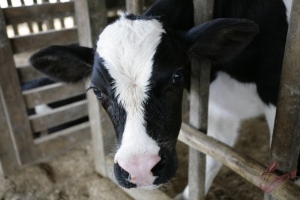Domestic market

The Nghia Son commune project’s construction kicked-off in 2009’s third quarter. Its dairy-cows are imported from famous diary industry countries like New Zealand, while farming and processing technologies are from Israel.
The project, financed by North Asia Commercial Joint Stock Bank, currently has 10,000 high-quality milk-cows. The number will be 45,000 by July, 2012 , of which over 30,000 will be available for milking.
The project will have 137,000 cows by 2017, when about 70 per cent of them will be available for milking and the factory will churn out 500 million litres of high-quality milk per year, meeting half of Vietnam’s fresh milk demand.
TH Milk’s general director Tran Bao Minh told VIR that by 2012’s first quarter, the company would have completed importing 30,000 cows. So far, over $ 100 million has been invested in the project, which is now employing more than 500 local workers with average monthly salary of VND3 million ($154).
He said TH Milk’s competition with other milk makers in Vietnam like Vinamilk and Dutch Lady was not taken into account in TH Milk’s current business strategy. “But, we will soon become a leader in providing fresh high-quality milk in Vietnam.”
Vietnam still has to import around three quarters of its dairy needs and poor output quality is still a substantial problem for producers in Vietnam. For example, the results of a test released by newspaper Thanh Nien in April 2009 showed that protein content in milk was often well below advertised levels. Another problem is that the sector suffers from low yields. In 2008, average milk yields on Vietnamese dairy farms were a mere 1,741kg per cow. This is little over half the level of Thailand and global dairy powerhouse New Zealand.
In spite of the current problems of low global milk prices and high input costs faced by farmers, rising demand on the back of per capita income growth and government support for the sector should ensure strong growth in dairy production. Over the forecast period, BMI (Business Monitor Int’l) forecasts domestic milk consumption to grow by 40% and the Vietnamese government has set a target to have 40% of this consumption met by domestic production. While this may be somewhat unrealistic in the short term – the country still needs to import roughly three quarters of its dairy needs – the government investment in the sector is another step towards helping Vietnam satisfy its dairy needs.






















